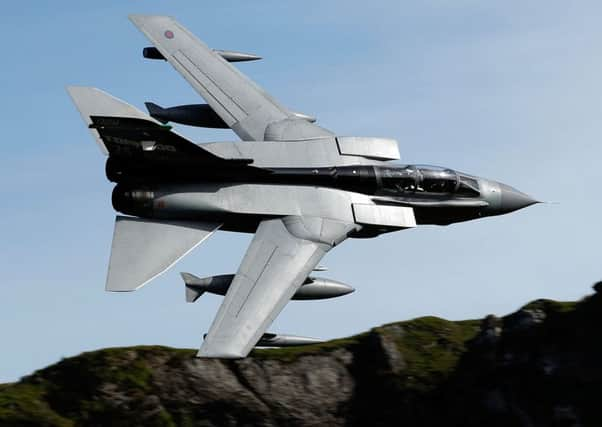RAF jets in six near-misses at Scottish airports


Figures released after a written question by SNP defence spokesman Douglas Chapman have also shown that in a further nine incidents near Scotland’s five main airports between 2010 and 2014, “safety was compromised”, suggesting that there was a risk of a collision.
The revelation has led to fresh calls for the installation of a collision warning system to be speeded up on the UK’s fleet of Tornados and for the Ministry of Defence to think again about not having such a system for Typhoon jets, now based at RAF Lossiemouth in Moray, and joint strike fighters which are due to be brought into service in the next decade.
Advertisement
Hide AdAdvertisement
Hide AdThe incidents, known as “airprox”, where military jets are involved in situations which could lead to a collision, are categorised according to seriousness with A and B the two most dangerous types.
According to the MoD figures around Edinburgh, Glasgow, Prestwick, Aberdeen and Inverness airports, there were six category As (serious risk) and nine category Bs (safety compromised) between 2010 and 2014.
The issue of collisions has been high on the agenda since July 2012 when three airmen lost their lives in a collision between two Tornados above the Moray Firth.
It emerged that a recommendation for Tornados to have a potentially lifesaving collision warning system in 1998 was ignored by the Labour government and then again put on the backburner in the Tory/Lib Dem coalition strategic defence and security review in 2010.
Since the fatal accident, a system has been developed for Tornados and is in the process of being fitted to planes.
But a damning report in January by the Military Aviation Authority (MAA) warned that there was a risk of a collision with a passenger jet especially as no warning systems have been fitted to Typhoons.
After the admission of the incidents near Scottish airports, Mr Chapman, the MP for Dunfermline and West Fife, said: “The MoD need to answer some questions here – one of these kind of incidents is one too many. At this time of year in particular, when people are planning summer holidays and our airports are at their busiest, aviation safety is the paramount concern and these figures are far from reassuring.”
However, an MoD spokesman insisted that the number was just a tiny fraction of millions of flights in that period and underlined the safety record.
Advertisement
Hide AdAdvertisement
Hide AdHe said: “Flight safety remains the highest priority for the armed services. There are already a multitude of measures in place to enable both freedom of airspace use for all, whilst ensuring that some of the most highly congested airspace in the world is also amongst the safest.
“Millions of flights are made in UK airspace each year. Of these only a tiny fraction result in air proximity reports being submitted and this further underlining the professionalism of the commercial, military and private aviators that use it.”
Sources in the MoD also stressed that while the introduction of a collision warning system on any aircraft will add an additional layer of safety “it will not be a panacea”.